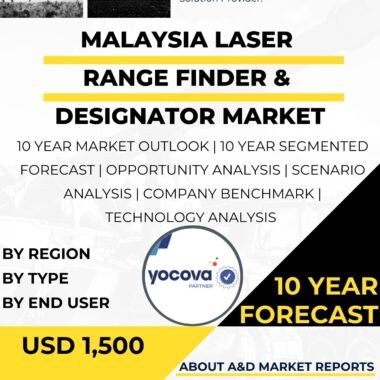Description
Medium Caliber Ammunition Market in Germany represents a significant segment within the global defense and military industry, encompassing ammunition with calibers generally ranging between 20mm to 40mm. This ammunition category is essential for a variety of military applications, including use in rifles, machine guns, automatic cannons, and anti-aircraft systems. It plays a vital role in modern warfare due to its versatility, capable of being deployed across platforms such as infantry fighting vehicles, main battle tanks, naval vessels, and military aircraft. The demand for medium caliber ammunition is closely linked to ongoing defense modernization programs and increasing geopolitical tensions worldwide, which drive investments in reliable and effective combat munitions.
The market is primarily driven by the lethal ammunition segment, that forms the dominant share of the industry. This segment includes a range of ammunition types such as high explosive incendiary, armor-piercing rounds, air burst rounds, and target practice variants. These are widely employed by military forces to enhance battlefield effectiveness against armored vehicles and aerial threats. Modern military advancements, particularly the development of impact-resistant armor on vehicles, have fueled the need for more sophisticated and penetrating medium caliber rounds which maintain lethality while adapting to evolving defense technologies.
Alongside lethal ammunition, the non-lethal ammunition segment is gaining traction, particularly among law enforcement and military units tasked with crowd control and riot management. Non-lethal options such as sponge rounds, bean bag rounds, and blunt projectiles are seeing increased adoption as they provide effective means to minimize casualties during operations requiring restraint and control. This segment is notable for its innovation with improved accuracy and reduced risk of serious harm, reflecting broader trends toward more ethical and controlled use of force in security operations.
Geographically, the medium caliber ammunition market is marked by robust activity in North America, Asia-Pacific, Europe, Latin America, and the Middle East & Africa regions. North America, led by the United States, holds a commanding position due to significant defense budgets and continuous upgrades of military platforms. The U.S. military?s extensive modernization programs contribute heavily to the demand for advanced medium caliber ammunition, supported by a strong domestic manufacturing infrastructure. Canada is also a notable market in the region, emphasizing its military modernization and participation in multinational defense initiatives.
In the Asia-Pacific region, countries like China, India, Japan, and South Korea are key markets driven by rising defense expenditures and regional security dynamics. China dominates this space with its expansive military modernization efforts and strong domestic production capabilities. India is noted for its rapid growth, fueled by comprehensive military upgrades and a push towards indigenous manufacturing of defense products, including medium caliber ammunition.
Europe remains an important region, with countries such as Germany, the United Kingdom, and France maintaining significant demand driven by NATO commitments and national defense upgrades. Latin America?s market, centered on countries like Brazil and Colombia, is influenced by internal security needs and efforts to modernize defense forces. The Middle East and Africa are characterized by heightened demand due to ongoing regional conflicts, with Saudi Arabia and the UAE being prominent markets fueled by large defense spending and modernization initiatives.
The competitive landscape of the medium caliber ammunition market is highly consolidated, dominated by major global defense contractors such as BAE Systems, Rheinmetall AG, General Dynamics, Northrop Grumman, and Nammo AS. These companies leverage extensive research and development capabilities to produce technologically advanced ammunition, including smart and precision-guided munitions. Collaboration through joint ventures and partnerships with local manufacturers is common as these players seek to expand their geographical reach and comply with domestic defense procurement regulations in various regions. This consolidation creates high entry barriers due to the capital-intensive nature of production, stringent regulatory requirements, and the complex technology involved in ammunition manufacturing.
Technological innovation remains a critical factor shaping the medium caliber ammunition market. Advances in materials, design, and manufacturing processes have enhanced ammunition performance, reliability, and lethality. The integration of smart technologies, such as guidance systems and programmable fuses, is transforming traditional ammunition into precision weapons that offer increased effectiveness on the battlefield. Manufacturing improvements have also led to better quality control and cost efficiencies, enabling manufacturers to meet the growing and diverse demands of global defense sectors.
Sustainability is becoming an emerging consideration within the industry, with companies exploring environmentally conscious production methods and materials that comply with evolving regulatory standards without compromising ammunition performance. The balance of innovation, cost-efficiency, and environmentally responsible production is critical for future market growth.
Overall, the medium caliber ammunition market is expanding steadily, propelled by continuous military modernization, rising defense budgets, and strategic geopolitical developments. The ammunition’s adaptability across various military platforms and its role in modern and asymmetric warfare ensure its continued importance. The market?s future growth will likely continue to be driven by the development of advanced ammunition technologies and the strategic needs of nations aiming to maintain or enhance their military capabilities globally. This dynamic market is essential for sustaining the combat readiness and operational effectiveness of armed forces worldwide, reflecting its vital role in national and regional security frameworks.




